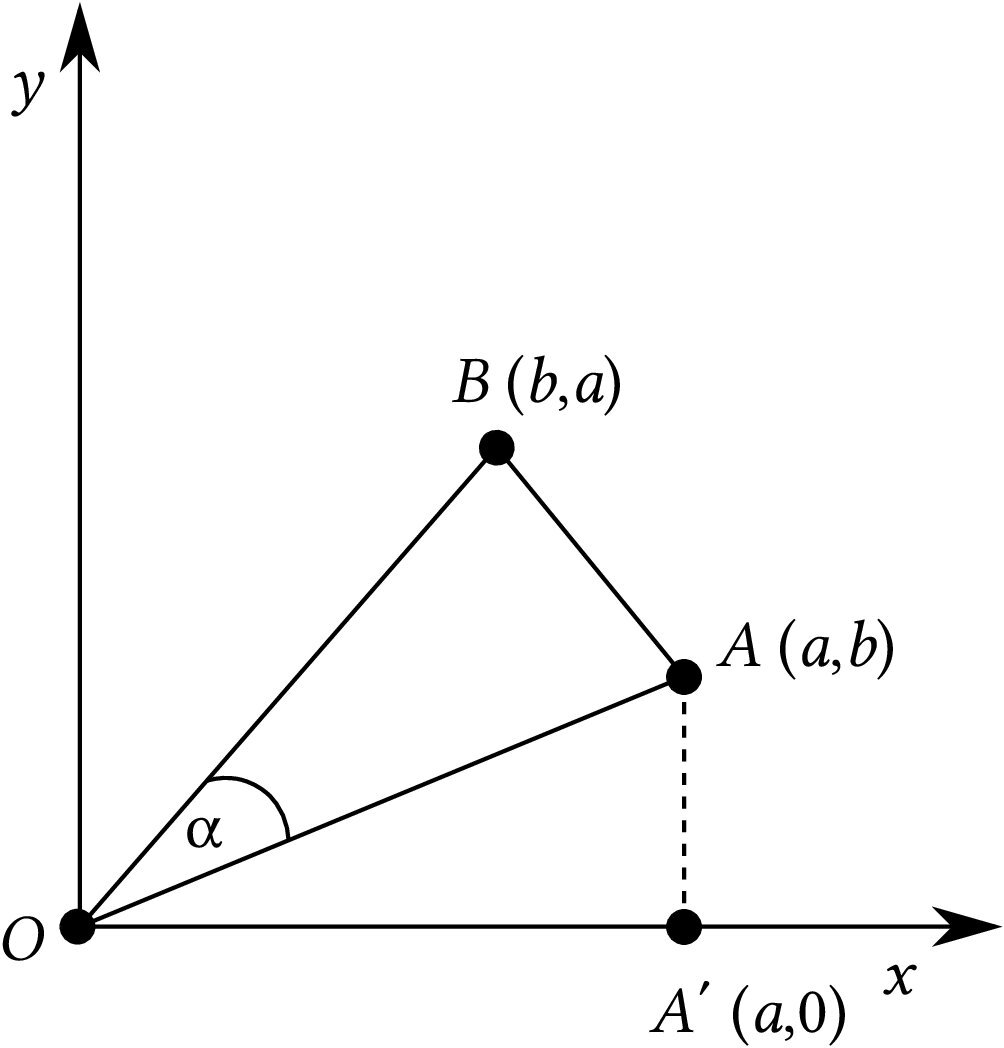The Sombor index (\(SO\)) is a vertex-degree-based graph invariant, defined as the sum over all pairs of adjacent vertices of \(\sqrt{d_i^2+d_j^2}\), where \(d_i\) is the degree of the \(i\)-th vertex. It has been conceived using geometric considerations. Numerous researches of \(SO\) that followed, ignored its geometric origin. We now show that geometry-based reasonings reveal the geometric background of several classical topological indices (Zagreb, Albertson) and lead to a series of new \(SO\)-like degree-based graph invariants.
In this paper, we are concerned with a geometric interpretation of vertex-degree-based topological indices, extending the considerations from Ref. [1]. Let \(G\) be a simple graph with vertex set \(\mathbf V(G)=\{v_1,v_2,\ldots,v_n\}\) and edge set \(\mathbf E(G)\). The degree (= number of first neighbors) of the vertex \(v_i \in \mathbf V(G)\) will be denoted by \(d_i\). If the vertices \(v_i\) and \(v_j\) are adjacent, then the edge connecting them is labeled by \(ij\).
In the mathematical and chemical literature, several dozens of vertex-degree-based (VDB) graph invariants (usually referred to as ”topological indices”) have been introduced and extensively studied [1,2,3,4]. Their general formula is
Some of these VDB indices, mentioned in the later part of the paper, are the first and second Zagreb index [5,6]
The distance between the degree-point of the edge \(ij\) (denoted by \(A\) in Figure 1), and the origin (\(O\)), assuming an Euclidean metrics, is \(\sqrt{d_i^2+d_j^2}\). Summing this over all edges of the graph \(G\), one obtains the right-hand side of Eq. (4), i.e., the Sombor index [1].
We indicate this transformation as

In fact, the Sombor index was actually conceived by using the above geometric considerations [1]. This VDB topological index soon attracted much attention, and its numerous mathematical [8,9,10,11,12,13,14] and chemical [15,16,17,18,19] applications have been established. Yet, with a single exception [20], the geometry-based features of the Sombor index were ignored, and only its algebraic and combinatorial aspects were in focus of interest.
In this paper we intend to point out the great variety of Sombor-index-like VDB graph invariants that can be constructed by means of geometric arguments.
First of all, we recall that in [1], it was shown that the distance between the degree-point and its dual (points \(A\) and \(B\) in Figure 1), is equal to \(\sqrt{2}\,\big|d_i-d_j \big|\), which after adding over all edges yields the Albertson index, i.e., \(\sqrt{2}\,Alb(G)\), cf. Eq. (3). In analogy to formula (5), we write this as:
Thus, a few classical VDB topological indices have a geometry-based interpretation.
First note that by bearing in mind Eqs. (5) and (6), we immediately get
\[ \sum_{ij \in \mathbf E(G)} perim(ABO) = 2\,SO(G) + \sqrt{2}\,Alb(G)\,. \] Using elementary geometry (Heron’s formula), knowing the distance between the points \(A\) and \(O\) (same as between \(B\) and \(O\)), cf. Eq. (5), as well as between \(A\) and \(B\), cf. Eq. (6), we obtain \[ area(ABO) = \frac{1}{2}\,\big(a^2-b^2 \big)\,, \] from which it follows \[ \sum_{ij \in \mathbf E(G)} area(ABO) = \sum_{ij \in \mathbf E(G)} \frac{1}{2}\,\big|d_i^2 – d_j^2 \big| := SO_1(G)\,. \] Let \(\alpha\) be the angle between the lines \(OA\) and \(OB\), see Figure 1. Using the classical formula \[ area(ABO) = \frac{1}{2}\,dist(OA)\,dist(OB)\,\sin \alpha\,, \] we get \[ \frac{1}{2}\,\big| d_i^2-d_j^2 \big| = \frac{1}{2}\,\left( \sqrt{d_i^2+d_j^2} \right)^2\,\sin \alpha \,,\] from which \[ \sum_{ij \in \mathbf E(G)} \sin \alpha = \sum_{ij \in \mathbf E(G)} \left| \frac{d_i^2 – d_j^2}{d_i^2+d_j^2} \right| := SO_2(G)\,. \] Denote by \(\Gamma_c\) the circumcircle (circumscribed circle) on the triangle \(ABO\). The respective incircle (inscribed circle) will be denoted by \(\Gamma_i\). Using elementary, yet somewhat lengthy, geometric reasoning, it can be shown that